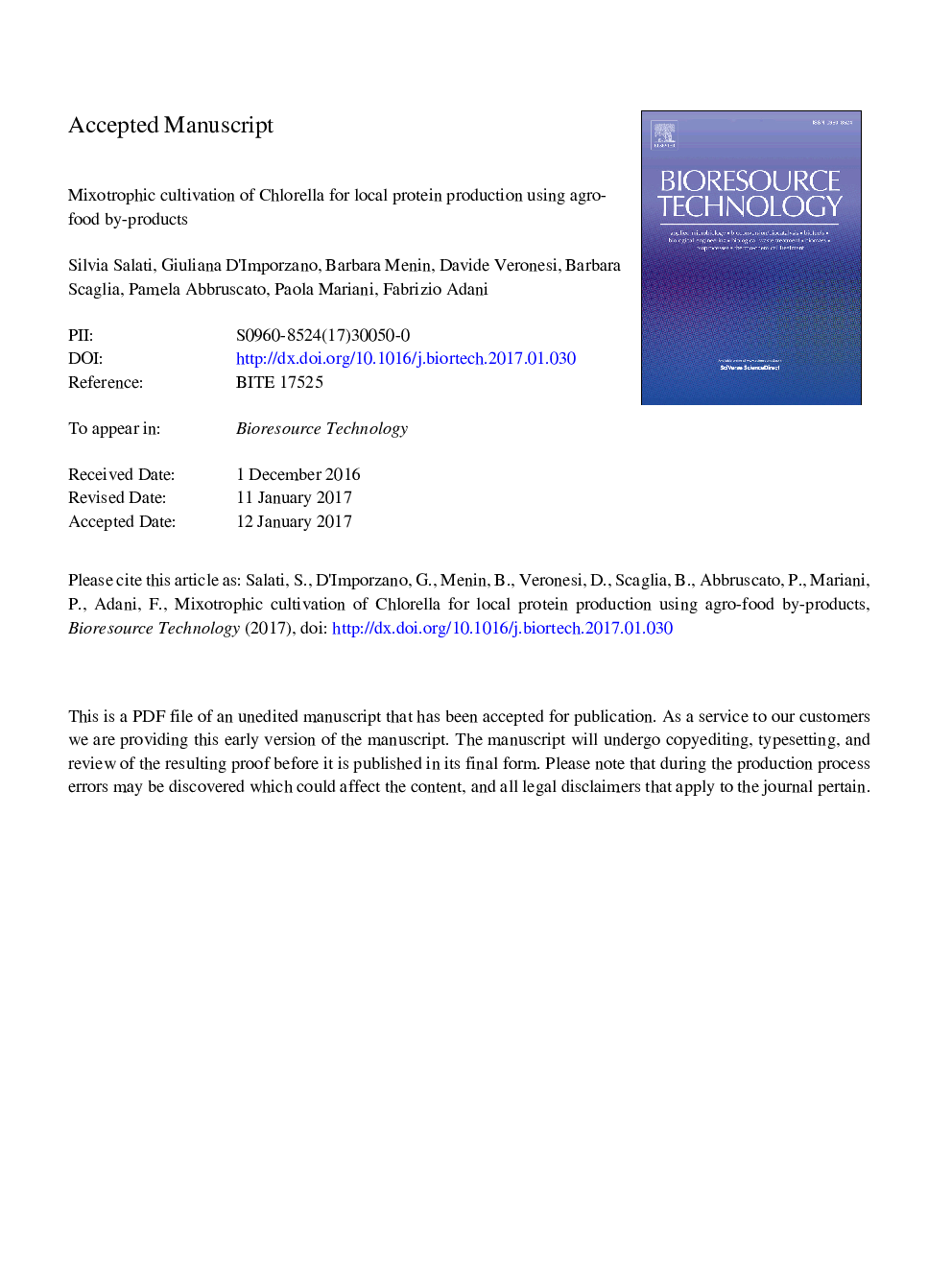| Article ID | Journal | Published Year | Pages | File Type |
|---|---|---|---|---|
| 4997469 | Bioresource Technology | 2017 | 34 Pages |
Abstract
A local strain of Chlorella vulgaris was cultivated by using cheese whey (CW), white wine lees (WL) and glycerol (Gly), coming from local agro-industrial activities, as C sources (2.2 g C Lâ1) to support algae production under mixotrophic conditions in Lombardy. In continuous mode, Chlorella increased biomass production compared with autotrophic conditions by 1.5-2 times, with the best results obtained for the CW substrate, i.e. 0.52 g Lâ1 dâ1 of algal biomass vs. 0.24 g Lâ1 dâ1 of algal biomass for autotrophic conditions, and protein content for both conditions adopted close to 500 g kgâ1 DM. Mixotrophic conditions gave a much higher energy recovery efficiency (EF) than autotrophic conditions, i.e. organic carbon energy efficiency (EFoc) of 32% and total energy efficiency (Eft) of 8%, respectively, suggesting the potential for the culture of algae as a sustainable practice to recover efficiently waste-C and a means of local protein production.
Related Topics
Physical Sciences and Engineering
Chemical Engineering
Process Chemistry and Technology
Authors
Silvia Salati, Giuliana D'Imporzano, Barbara Menin, Davide Veronesi, Barbara Scaglia, Pamela Abbruscato, Paola Mariani, Fabrizio Adani,
